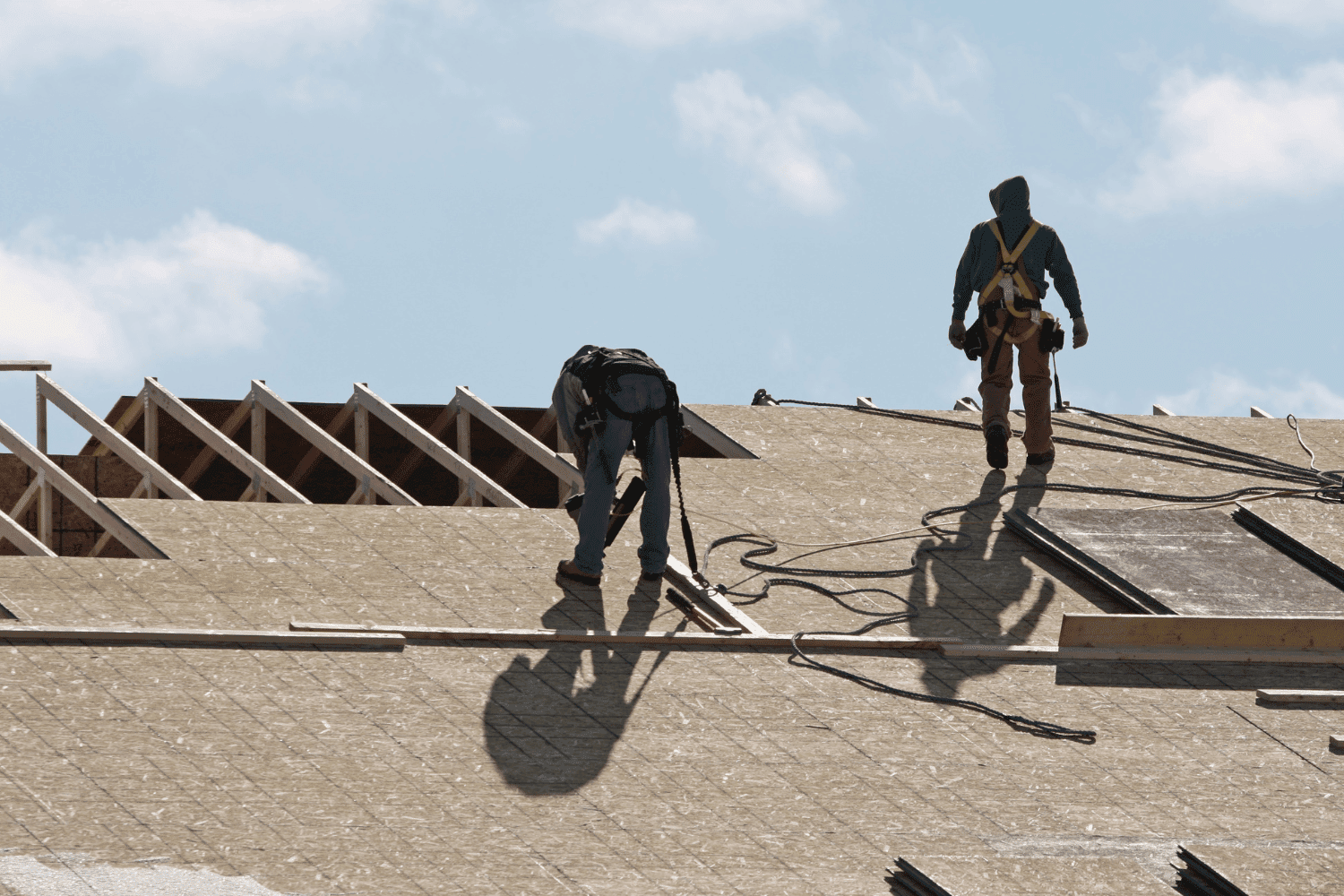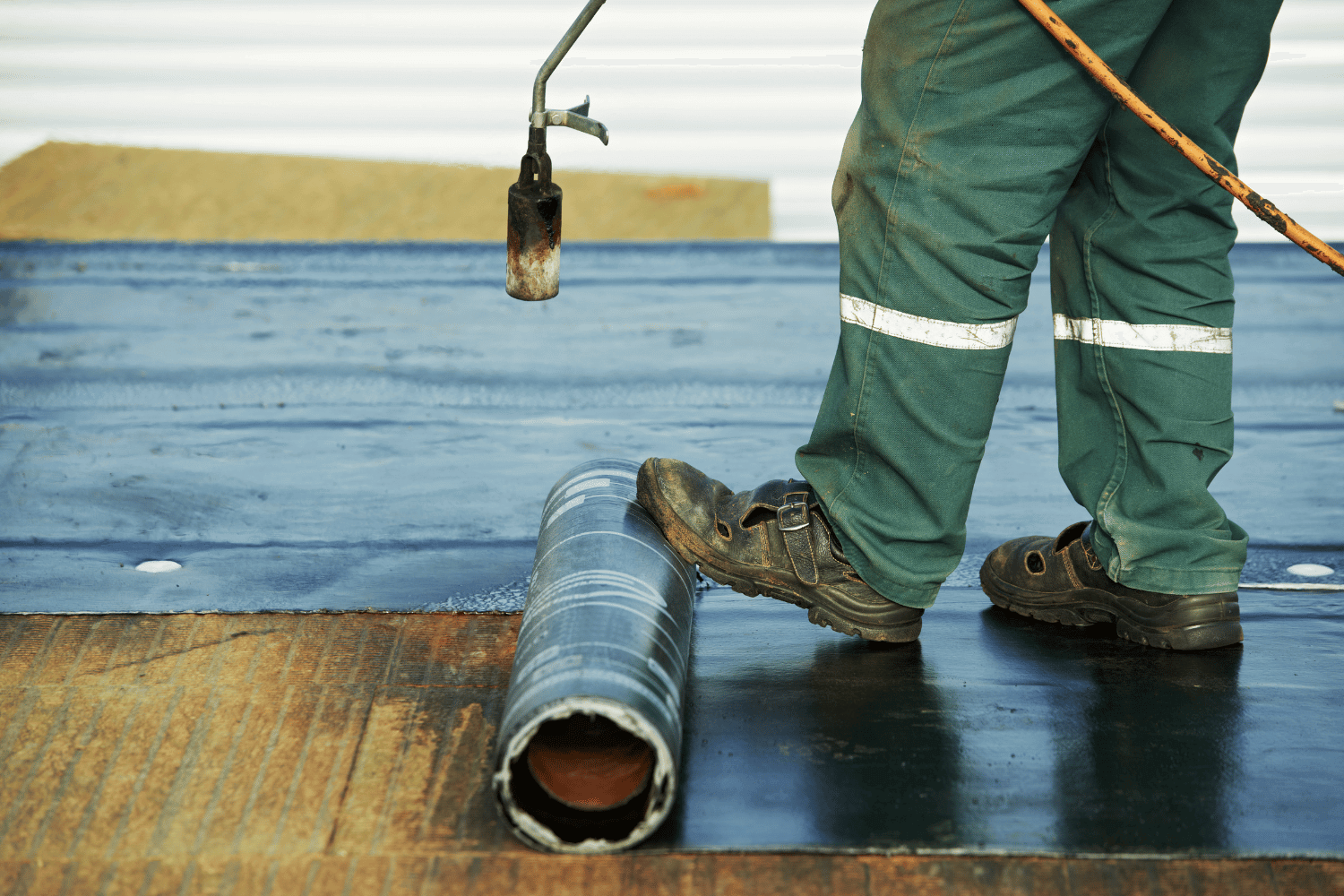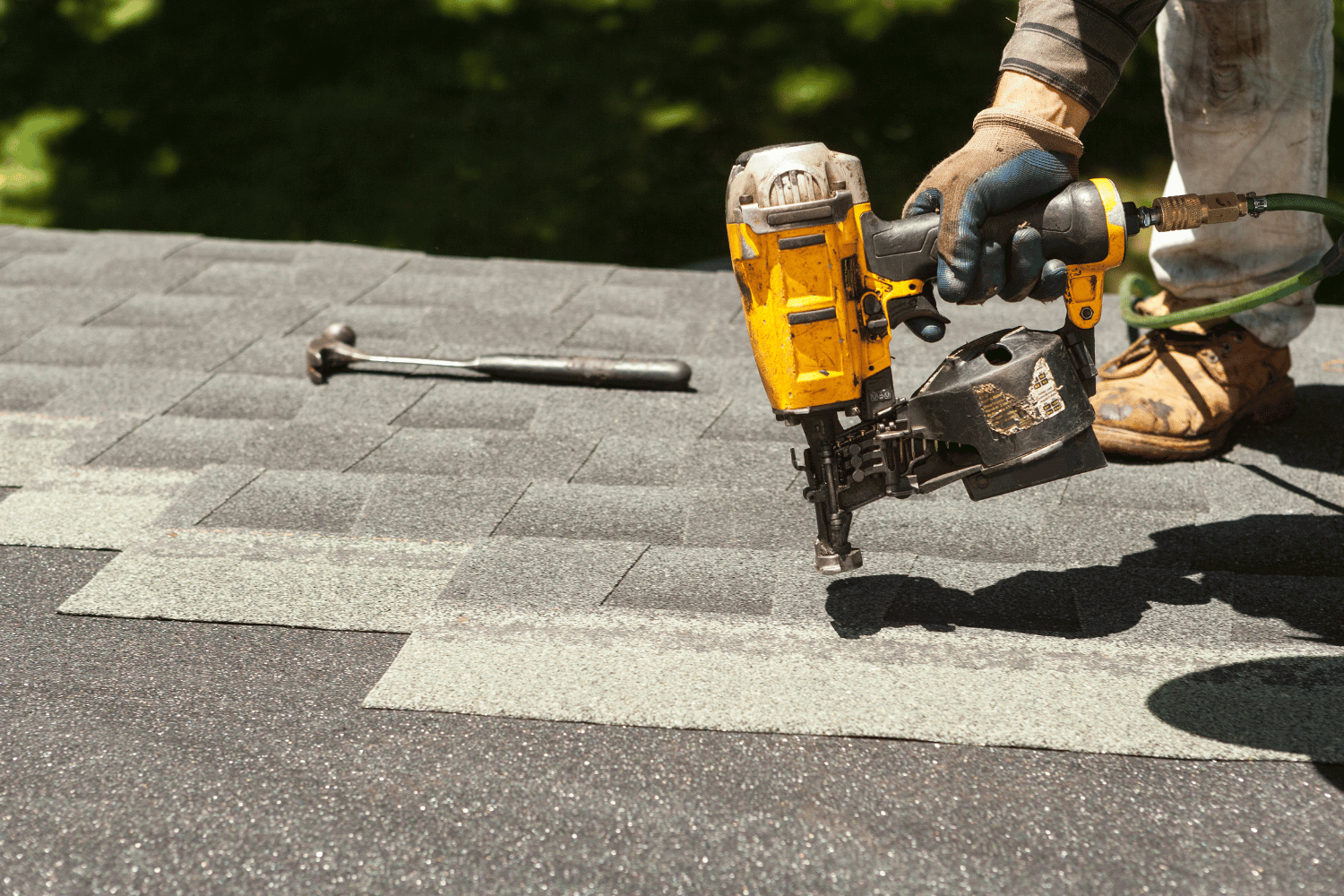How Long Will A Roof Last? Lifespan of Different Roof Types
Wondering how long a will roof last? The answer depends on the type of material used. Roof lifespans vary widely: asphalt shingles typically last 15-30 years, while slate roofs can endure up to 200 years. This article will explore the longevity of different roofing materials and the factors that affect their durability.
Key Takeaways
- Roof lifespans vary significantly by material, ranging from 15 years for asphalt shingles to over 200 years for slate.
- Key factors influencing roof longevity include installation quality, material quality, climate impact, ventilation, and regular maintenance.
- Regular inspections and timely repairs are essential for extending a roof’s life, preventing small issues from escalating into costly problems.
Lifespan of Common Roofing Materials

A roof’s lifespan significantly impacts its ability to shield your home from the elements. Roofing materials vary widely in durability, with some lasting just a few decades and others enduring for over a century. Knowing these differences assists in selecting the best material for your requirements and budget.
Roofing materials can last from 20 years, as seen with asphalt shingles, to over 100 years, such as slate, metal, and clay. Some need replacement within two decades, while others endure over a century with proper care. Your choice of roofing material greatly affects its longevity and the frequency of replacement.
Asphalt Shingles
Asphalt shingles are popular for their affordability and easy installation. Their lifespan typically spans 15 to 30 years, influenced by shingle quality and climate. Three-tab shingles last 15 to 18 years, while premium and architectural shingles can endure 20 to 30 years or more under optimal conditions.
Climate, material quality, and maintenance significantly affect asphalt shingle longevity. Poor attic ventilation can further reduce their lifespan by undermining shingle integrity.
Routine maintenance and timely repairs extend the life of asphalt shingles and avoid premature asphalt roof replacement.
Metal Roofs
Metal roofs are prized for their durability, often lasting 40 to 70 years. Premium metals like copper and zinc can exceed 100 years. Common steel roofs with galvanized zinc or aluminum coatings last 25-50 years, while stone-coated steel tiles and standing seam roofs generally endure 30-50 years. Tin roofs can surpass 50 years.
Metal roofs’ longevity makes them appealing for long-term investment, despite higher initial costs. Fewer repairs and replacements can render a metal roof cost-effective over time.
Slate Roofs
Slate roofs, known for their exceptional durability, last 75 to 200 years, making them one of the longest-lasting options. Copper also boasts a roof’s lifespan exceeding 100 years.
Requiring minimal upkeep, slate roofs are a low-maintenance, highly durable option for homeowners seeking long-term roofing solutions.
Wood Shingles and Shakes
Wood shingles and shakes provide a natural, aesthetically pleasing roofing choice. Their lifespan ranges from 20 to 40 years, with cedar shakes averaging 30 years. Climate, vegetation, and maintenance practices can influence their longevity.
High-quality materials and suitable climate conditions can extend cedar shakes’ lifespan, outlasting other wood types used in roofing. Wood shakes generally last longer than asphalt shingles, appealing to those who prefer a natural roof aesthetic.
Clay and Concrete Tiles
Clay and concrete tiles are celebrated for their durability. Clay tiles last 50 to 100 years, making them one of the most enduring roofing materials. Concrete tiles, though slightly less durable, still offer 40 to 75 years of longevity. Overall, clay tiles are more durable, but concrete tiles also provide substantial longevity.
Clay tiles typically last 50 to 100 years, ideal for long-term roofing. Concrete tiles, while not as enduring, still provide a substantial lifespan, offering a durable and reliable option.
Key Factors Affecting Roof Longevity

Several factors influence roof longevity beyond the materials used. Installation quality, material quality, climate, ventilation, insulation, and regular maintenance are crucial. Understanding these aspects helps homeowners proactively extend their roof’s lifespan.
These factors are interconnected, and addressing them collectively enhances a roof’s durability. Proper installation and high-quality materials improve resistance to severe weather, while regular maintenance prevents minor issues from escalating.
We’ll examine each of these factors in detail.
Quality of Installation
Installation quality is a major factor in roof longevity. Poor installation can cause issues like mold, damaged trusses, and premature failure. Professional installation of roofing materials maximizes lifespan and avoids errors. Faulty installation often leads to premature failure, highlighting the importance of skilled workmanship.
Common mistakes include poor workmanship, inadequate attic ventilation, and improper nailing.
Roofing Material Quality
High-quality roofing materials ensure better durability and performance over time, making them a worthwhile investment.
Investing in quality materials maximizes a roof’s life expectancy and reduces the need for frequent repairs and replacements.
Climate and Weather Conditions
Severe weather accelerates roof wear and tear. Rapid temperature swings damage roofing materials, especially asphalt and wood. Roof slope and style influence water shedding and sun exposure, affecting durability.
High winds can loosen or remove shingles, exposing the underlying structure.
Ventilation and Insulation
Ventilation and insulation are vital for roof integrity and longevity. Poor attic ventilation traps hot air in summer, deteriorating adhesives, and cold air in winter, causing damaging condensation. Issues include cracked shingles, swollen trusses, and mold growth. Proper ventilation maintains consistent roof temperature, minimizing heat or cold damage.
Attic insulation regulates roof temperatures, seals openings, and protects the roof deck from condensation. Poor insulation reduces roof integrity and longevity. A minimum R-value of R-38 is recommended for attic insulation in winter climates.
Ventilation and insulation jointly prevent heat damage and condensation, greatly extending roof longevity. Ensuring both proper insulation and ventilation in the attic is crucial for optimal conditions.
Regular Maintenance
Regular maintenance prolongs a roof’s life expectancy. Routine inspections identify early wear and damage, minimizing the risk of costly repairs. Consistent maintenance significantly extends roof longevity.
Roof maintenance prevents premature replacement and ensures long-lasting home protection.
Signs Your Roof Needs Replacement

Recognizing signs that a roof needs replacement is crucial to prevent further home damage. Roofs over 20 years old may be nearing the end of their useful life. Neighbors replacing their roofs can also indicate that yours might be due for replacement.
Additional indicators include a wet or shifting roof under pressure, curled shingle edges, cupped tabs, bald spots from missing granules, and cracked shingles. Early identification allows for timely action, avoiding extensive and costly repairs.
We will explore these signs in more detail.
Missing or Damaged Shingles
Shingle damage often appears as splitting, cracking, buckling, and curling. Clay tiles may crack or chip, while slate roofs can show missing or cracked shingles. Asphalt shingles may display disarray or significant wear as they deteriorate.
Age, extreme weather, and poor ventilation contribute to curled or damaged roof shingles edges. Replacing a few damaged shingles is preferable to replacing the entire roof when possible.
Water Damage and Leaks
Water stains on ceilings or walls usually indicate leaking roofs needing attention. Water damage and roof leaks signal potential roof failure and must not be ignored, as they can lead to significant structural and interior damage.
Addressing leaks promptly prevents costly repairs and extensive home damage.
Sagging Roof Deck
A spongy-feeling roof can indicate sagging. A wet or movable roof when pushed may need replacement. If sagging is suspected, use a broom to push at the spot and assess movement.
Granules in Gutters
Granules in gutters often signify extensive shingle wear, indicating that they may need replacement soon.
Regularly checking gutters for granules helps monitor roof condition and allows for timely action if needed.
How to Extend Your Roof’s Life Expectancy

Extending a roof’s life expectancy requires regular maintenance, timely repairs, and proper care. Annual inspections are crucial for identifying and addressing issues before they escalate. Routine maintenance prevents leaks and catches problems early, enhancing durability.
Prompt repairs prevent small issues from becoming larger, costlier problems. Regular cleaning and debris removal prevent deterioration and extend roof life. Inadequate insulation stresses the roof and reduces its lifespan, emphasizing the importance of quality installations.
We will explore these practices in more detail.
Routine Inspections
Annual roof inspections are essential for maintaining roof integrity and longevity. They can identify issues like missing shingles and cracked caulking, enabling timely repairs.
Regular attic checks can reveal early roof problems, especially leaks. Early identification through routine inspections prevents severe damage and costly repairs.
Timely Repairs
Routine maintenance extends roof life expectancy and helps detect minor issues before they become major problems. Loose, cracked, or missing shingles indicate deterioration needing immediate attention. Water stains, mold, and leaks signal potential roof failure and must be addressed promptly. Regular roof repairs can help prevent these issues from escalating.
A sagging roof deck can signal structural issues that require prompt repair to avoid further damage. Annual roof inspections can help identify minor issues, ensuring they are resolved before escalating into significant repairs.
Cleaning and Debris Removal
Regular gutter maintenance prevents water overflow that can damage the roof and siding. Cleaning off moss is recommended to prevent its growth on the roof.
Neglecting routine maintenance can lead to significant damage to the roof, making regular cleaning and debris removal essential for extending the roof’s life expectancy.
Understanding Roofing Warranties

Roofing warranties provide homeowners with peace of mind by covering potential defects and issues that may arise post-installation. There are three primary types of roofing warranties: standard manufacturer, workmanship, and extended manufacturer warranties. Understanding these warranties can help you make informed decisions when hiring a roofing contractor and selecting roofing materials.
Reputable contractors often offer workmanship warranties that can vary significantly in duration, with some providing lifetime coverage. Knowing the details of these warranties can ensure you are adequately protected against defects and poor installation practices.
Manufacturer’s Warranty
A manufacturer’s warranty typically covers material defects, ensuring that the roofing materials used are free from significant flaws. A standard manufacturer warranty often covers material defects but does not include labor for removal and disposal of failed shingles. The typical duration of a manufacturer warranty ranges from 20 to 50 years.
Initial coverage under a manufacturer’s warranty typically includes labor costs for replacing defective shingles but requires prorated coverage after a set period.
Workmanship Warranty
Workmanship warranties from roofing contractors typically last between 5 to 10 years. These warranties cover installation errors and damage resulting from improper installation. Choosing reputable contractors is crucial for better warranty terms, as they are more likely to offer comprehensive coverage and stand behind their work.
Typically excluded from workmanship warranties are damages from poor workmanship and weather-related incidents.
Summary
In summary, the lifespan of your roof is influenced by various factors, including the type of roofing material, the quality of installation, climate conditions, and regular maintenance. Understanding these factors and recognizing the signs that indicate a need for roof replacement can help you make informed decisions and ensure your roof provides lasting protection for your home.
By investing in high-quality materials, ensuring proper installation, and engaging in regular maintenance, you can significantly extend your roof’s life expectancy. Remember, a well-maintained roof not only protects your home but also enhances its value and curb appeal. Stay proactive in your roof maintenance, and you’ll enjoy a durable and reliable roofing system for years to come.
Frequently Asked Questions
How long does an asphalt shingle roof last?
An asphalt shingle roof generally lasts between 15 to 30 years, influenced by shingle quality and climate. Therefore, proper maintenance can help maximize its lifespan.
What are the signs that a roof needs replacement?
If you notice missing or damaged shingles, leaks, water damage, a sagging roof deck, or granules collecting in your gutters, it’s time to consider a roof replacement. Addressing these issues promptly can help prevent further damage to your home.
How can I extend the lifespan of my roof?
To extend the lifespan of your roof, prioritize regular maintenance, timely repairs, and routine inspections. This proactive approach will help identify issues early and keep your roof in optimal condition.
What is a workmanship warranty?
A workmanship warranty protects against installation errors and damage caused by improper installation, generally lasting between 5 to 10 years. This ensures that any issues arising from poor workmanship will be addressed within this period.
What should be included in a regular roof inspection?
A regular roof inspection should include checking for missing shingles, cracked caulking, signs of leaks, and assessing the overall integrity of the roof. This helps ensure that potential issues are addressed before they lead to significant damage.
 574-318-3326
574-318-3326






